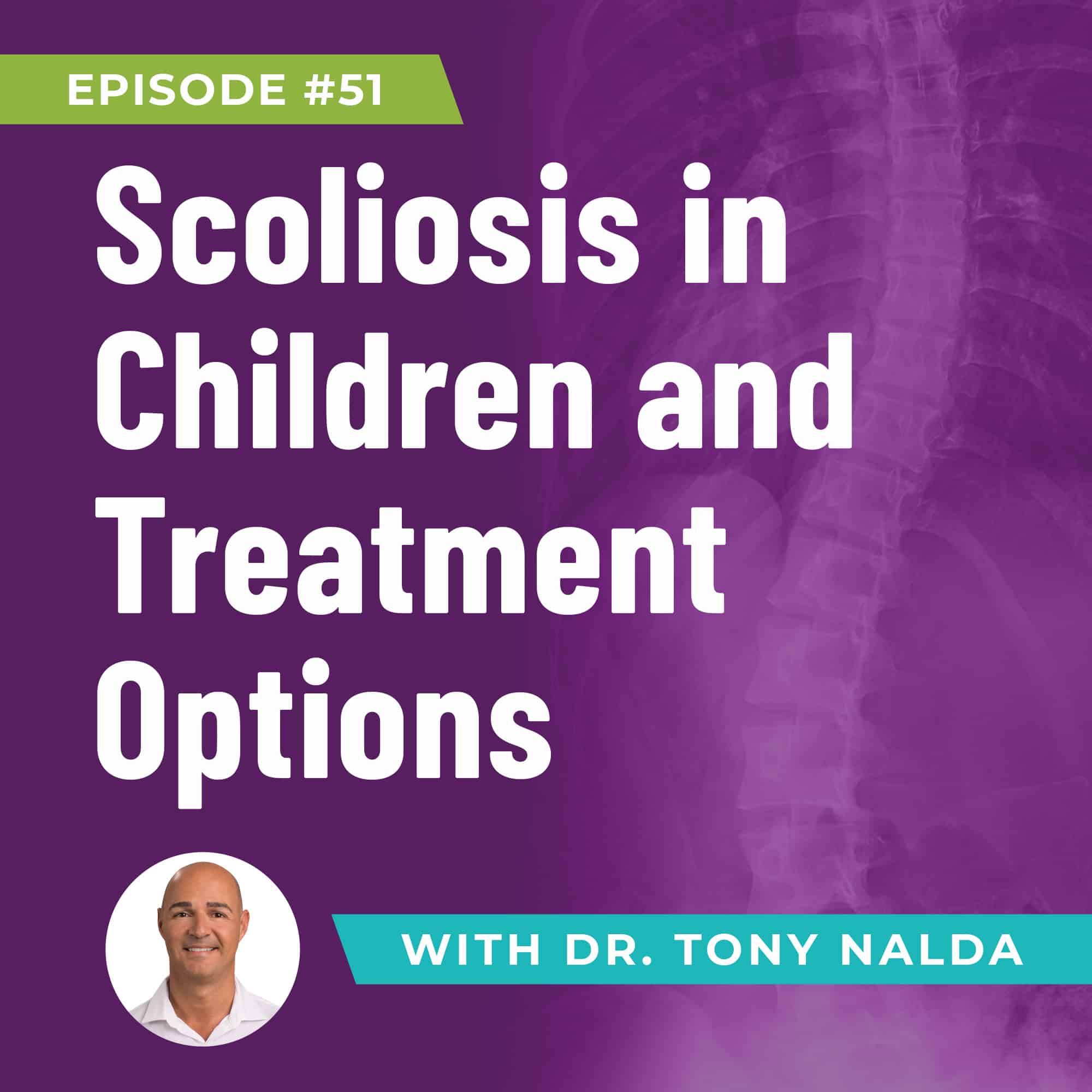Episode 51: Scoliosis in Children and Treatment Options
When we talk of scoliosis, we often associate it with kids because scoliosis is mostly diagnosed or thought to be among children and adolescents. Unfortunately, scoliosis diagnosis happens more in adults as it is related to age. So as patients increase with age, the more likely that patients in the same age group will have more incidence of scoliosis. So basically, every decade of life, the instance of scoliosis increase by percentage in that patient population So, older patients ages 70, 80, and 90 are most common to have scoliosis than children. But when we think of scoliosis, we think of it affecting children and adolescents because that’s when scoliosis is the most progressive.
The most common type of scoliosis found among children is called Adolescent Idiopathic Scoliosis of AIS. This is typically diagnosed between 10 and 18 years of age. Idiopathic is just a fancy term being used, meaning the cause is unknown. But we believe that AIS can be multifactorial, meaning there could be many factors that a patient is developing that are causing scoliosis to develop.
Even though scoliosis is diagnosed in the adolescent stage, we believe it occurs younger in life, sometime in the juvenile years that causes the small curve to develop but it starts progressing during growth, and in this stage, it's when it's diagnosed.
There are three different categories of scoliosis namely:
- Idiopathic - the cause is unknown
- Congenital - patient is born with scoliosis
- Neuromuscular - generally develops when a patient has a neuromuscular condition like Cerebral Palsy, Marfan Syndrome, or Down Syndrome
We know scoliosis is progressive, whether be it any of these 3 categories, its very nature is to worsen over time particularly if left untreated. The biggest trigger for progression is growth. The amount of progression is directly related to growth. Adolescence is by far the riskiest phase because this is where the most growth occurs.
Now, how fast can a curve progress during this rapid phase of progression during adolescence and what are the treatment options?
Please check out Dr. Tony Nalda’s podcast to know more.
Musicbed SyncID: MB01V4H9SYICZX1
Podcast: Play in new window | Download
Subscribe: RSS
Dr. Tony Nalda
DOCTOR OF CHIROPRACTIC
After receiving an undergraduate degree in psychology and his Doctorate of Chiropractic from Life University, Dr. Nalda settled in Celebration, Florida and proceeded to build one of Central Florida’s most successful chiropractic clinics.
His experience with patients suffering from scoliosis, and the confusion and frustration they faced, led him to seek a specialty in scoliosis care. In 2006 he completed his Intensive Care Certification from CLEAR Institute, a leading scoliosis educational and certification center.
About Dr. Tony Nalda
 Ready to explore scoliosis treatment? Contact Us Now
Ready to explore scoliosis treatment? Contact Us Now








